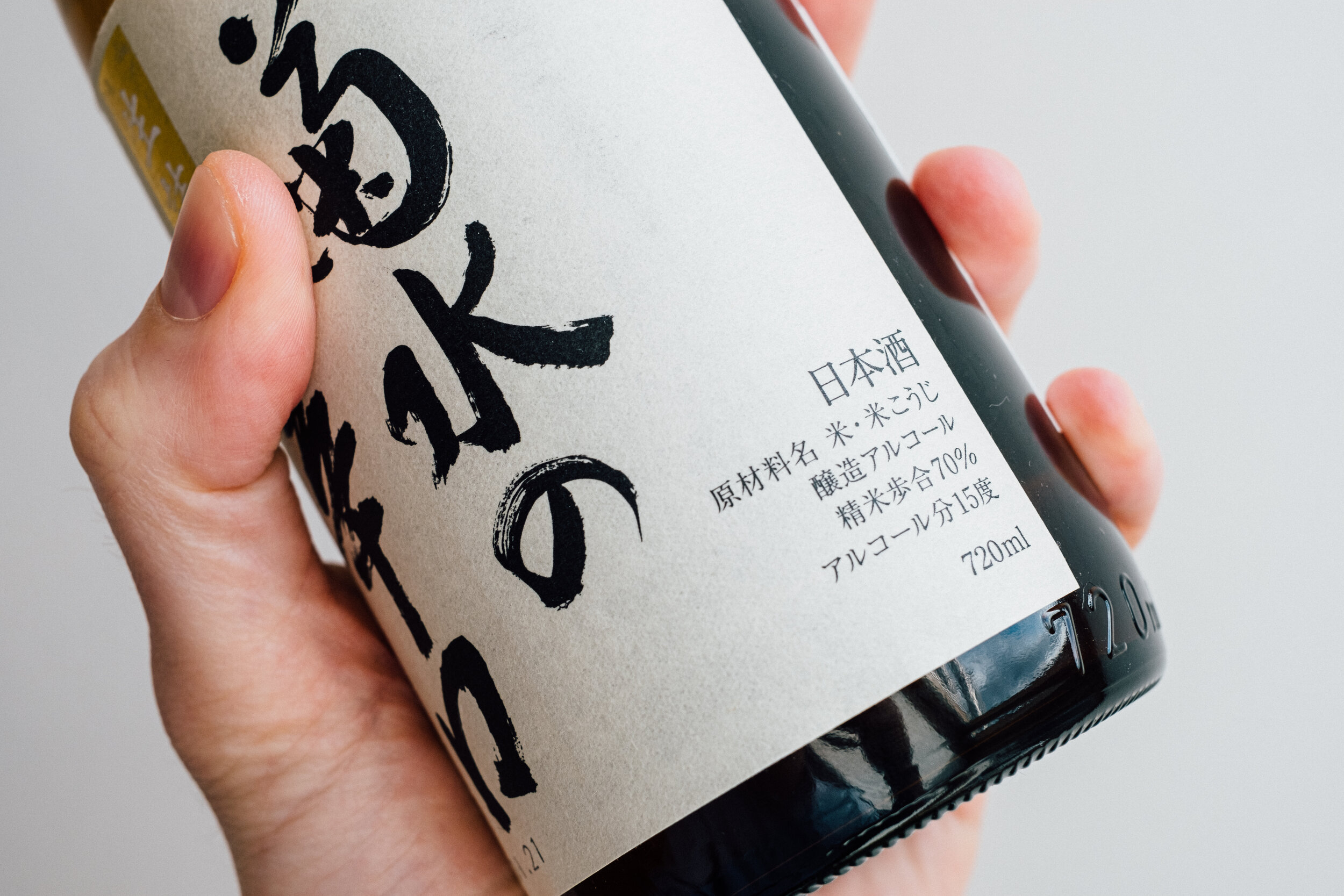Main Types of Japanese Sake
Sake can be a confusing topic, even if you already know your way around wine or beer. In this article we’ll have a look at the main categories and types of Japanese sake and what terms to look out for.
The Basics
Very roughly (and due to Japanese tax law), Japanese sake can be divided into two basic groups: Regular Sake and Special Designation Sake.
Hakkaisan’s futsushu is a well-known brand that’s easily available in most markets. (Photo: Hakkaisan)
Ordinary sake is called futsu-shu [普通酒] in Japanese, which means just that. This is the stuff that gets made all year round in large quantities at big industrial breweries. In the wine world, the equivalent would be a simple table wine or a generic bag-in-box.
It may be brewed using normal table rice as the base material and in addition to distilled alcohol, brewers are also allowed to add a few other additives like sugar and amino acids to improve the flavour and mouthfeel of the final product. In most cases, it will have a slightly yellowish colour, a grainy aroma, and a simple, robust taste.
Most of the sake that you find in non-specialist shops outside of Japan will probably be in this category. Quality can vary, but there are some good futsushu being made, often by smaller breweries for their local market. And while it’s probably not the right beverage to sip and contemplate over, it’s still good to have at hand when cooking or for mixing sake-based cocktails.
Special Designation Sake and Rice Polishing
‘Special Designation Sake,’ or Premium Sake, has much stricter requirements with regards to ingredients: It has to be made with special sake rice of good quality and at least 15% of the total rice used has to be koji-rice. Except for a limited amount of distilled alcohol in some cases, no additives are allowed.
Within this category, the different types of sake are classified by milling rate, i.e. how much of the rice grain is polished away before brewing. This process, where the grains can be polished to half their original size or even less, is very time-consuming, with milling time increasing exponentially the more you want to take away.
In the polishing process, the outer parts of the grain containing proteins and lipids are milled away, leaving a core of pure starch.
Why bother, you ask? The outer layer of the grain contains proteins and fats which can result in unwanted flavours and aromas in the sake, especially if your aim is to create a light and fruity expression (See ginjo and daiginjo below). In contrast, the center of a rice grain contains almost pure starch. Rice varieties bred especially for use in sake production have a distinct ‘heart’ of starch to facilitate higher milling rates.
The polishing ratio will usually be mentioned on the back or even the front label of a sake bottle. The Japanese term to look for is senmai-buai [精米歩合]. The percentage shown on a sake label tells you how much of the grain is left after milling, so a polishing ratio of 35% would mean that 65% of the grain have been milled away.
Let’s have a look at the different degrees of milling and how they contribute to different styles of sake, starting from the lowest.
The polishing rate for this honjozo sake is 70%, meaning the grains were milled to 70% of their original volume.
Junmai and Honjozo
Junmai [純米] means ‘pure rice,’ so nothing else must be added to the sake in question, namely no alcohol. Since Junmai has no minimum requirement for polishing, a brewer could theoretically make a junmai sake with unpolished whole grains. But in reality most are made with rice that has been milled down to around 70%. These are often umami-rich and flavorful sakes with depth and complexity. Expect notes of ripe banana, grains, a bit of earthiness and a little higher acidity.
This style leaves a lot of room for the brewer to experiment with different milling rates, brewing techniques, and ageing; so the taste and aroma of a junmai can vary quite a bit. Thanks to its umami, junmai sake is great for pairing with all kinds of food, especially more hearty dishes where you would otherwise go for a beer or a red whine. You can also try some different serving temperatures. Have a look in the recipe section for some inspiration.
The term junmai is actually not just used for one style, but applies to a whole category: Both ginjo and daiginjo can be made as junmai or non-junmai, so a daiginjo without added alcohol will be labelled as junmai daiginjo.
Why add alcohol?
This is done mostly to improve the aroma, as some of the aromatic compounds, especially the fruity aromas found in ginjo and daiginjo, are more easily soluable in alcohol than water.
Note that the added alcohol is later balanced out by the addition of water, so these sakes are not higher in alcohol and should not be considered ‘fortified’. In fact, the overall result is often a lighter, more elegant sake.
Honjozo [本醸造] has to be made with rice polished to at least 70%. Most importantly, the addition of a limited amount of alcohol is permitted for this style. This will make the sake a bit lighter and dryer than a junmai sake and bring out the aromas a little more.
The name means ‘original brewing method,’ as adding a small amount of alcohol used to be the norm. Recently however, this type of sake has seen a decline in sales and its lack of a clear profile in the eye of consumers might play a role in this.
But there are many great brews worth seeking out. A chilled glass of light and dry honjozo is perfect to accompany a plate of sashimi, for example, and can serve as a palate cleanser without overpowering more delicate tastes.
Ginjo and Daiginjo
Ginjo [吟醸] can be roughly translated as ‘careful brewing.’ Sake may be an ancient drink but the process that allows ginjo to be made is actually relatively new — it wasn’t until the 1980s that it started to really gain traction as the machines for milling rice to 60% or less were (and still are) quite expensive and the whole brewing process requires a lot of skill and attention. The polished grains become very fragile and prone to cracking so they have to be handled very carefully to ensure that every step of the process goes right. A lot of this work needs to be done manually; keep that in mind when you consider the price of your next bottle.
This junmai daiginjo ‘Vogue’ from Tatenokawa in Yamagata Prefecture is a good example of a fruity, aromatic daiginjo. (Photo: sakeguide.net)
Ginjo sakes have very distinctive fruity and floral aromas, which are produced by the yeast during fermentation: tropical fruits like pineapple, banana and lychee, and green apple or pear. If you like aromatic white wines or wheat beer, this is probably a good entry point for you.
The dai in Daiginjo[大吟醸] means big or great, and accordingly, daiginjo is ginjo turned to 11. The rice has to be polished to 50% or less, so only the starchy heart remains. The nose is even more expressive and the taste even cleaner.
When we use the terms ginjo or daiginjo on this page, we usually also mean junmai ginjo and junmai daiginjo, unless otherwise noted.
The Best (?)
Daiginjo will often be seen as the most prestigious type of sake due to its labour-intensive brewing method, its expressive aroma and elegant taste, and, of course, its price.
For some, the price tag and fancy bottle will seem very alluring in the shop. But especially for sake newcomers, a super-premium daiginjo can be a bit of a disappointment as these sakes often are extremely delicate and light — not the complexly flavourful drink they might have expected.
While it is tempting to apply the quality pyramid from the wine world (with village, premier cru and grand cru) to sake, it would be wrong to say that a daiginjo is inherently ‘better’ than a honjozo or that junmai-style sake is better than others — it all depends on your personal taste, your mood at the time, and the food you want to enjoy.
Wait, There’s More
Sometimes you might come across the word tokubetsu [特別] which means ‘special’. This can be used for both the junmai or honjozo category, e.g. ‘tokubetsu junmai’, but cannot be applied to ginjo or daiginjo.
The brewery has to fulfill at least one of three conditions to label their sake as such: the rice is polished to at lest 60%; the sake is made using sake rice (not regular table rice); the brewer is using some special technique that has been recognized by the authorities.
This will often be an interesting bottle and is worth keeping an eye out for. The brewer will have had a specific goal in mind that warrants the extra effort and has probably taken special care during production, compared to their regular junmai or honjozo.
Our guide on how to decipher sake labels also covers some of the other terms that might apply in addition to the category, like pasteurisation and fining.












